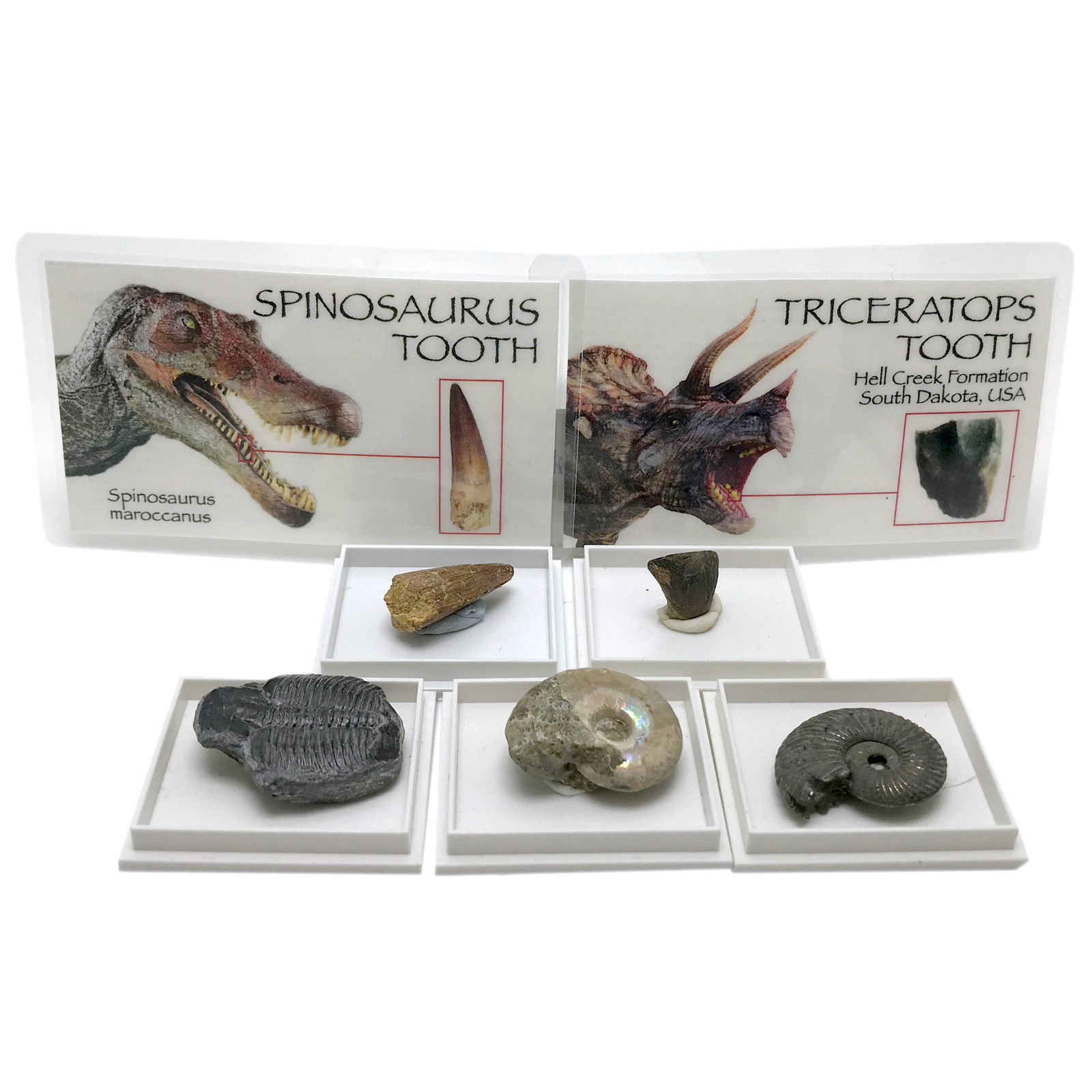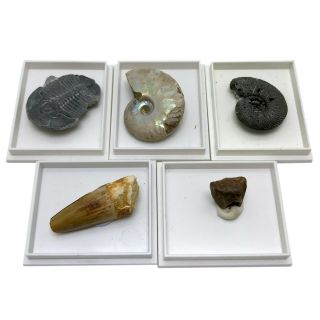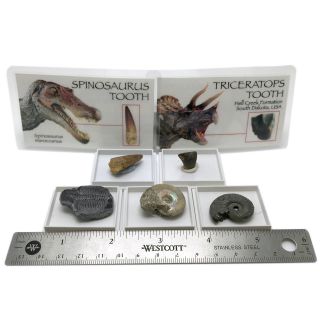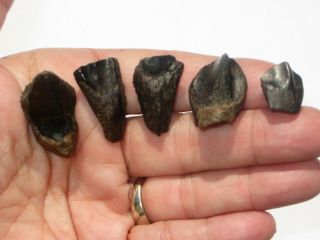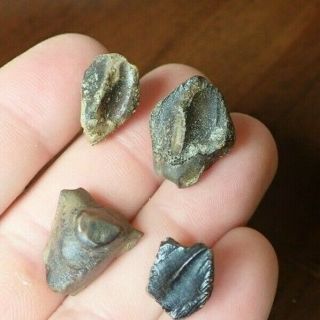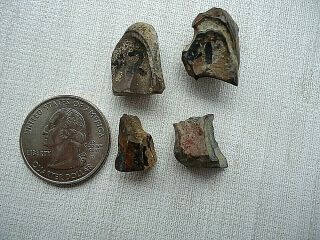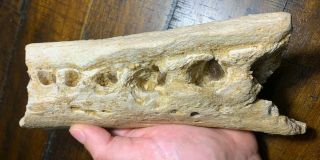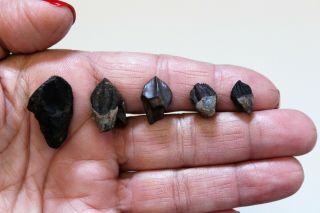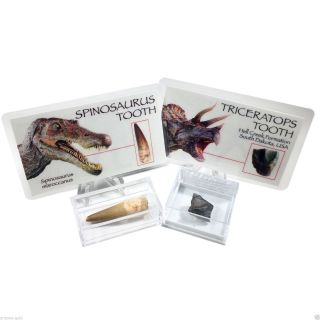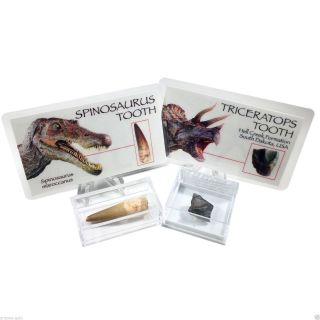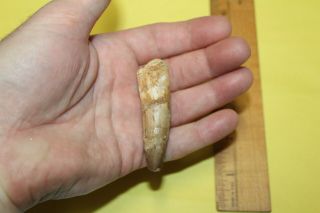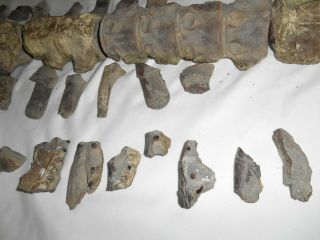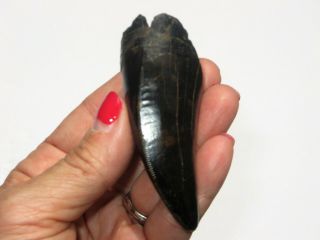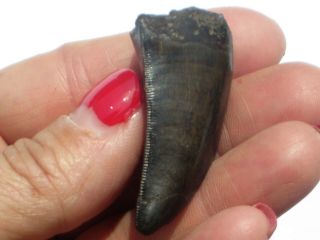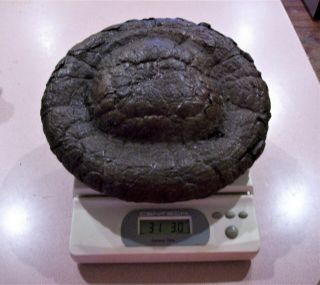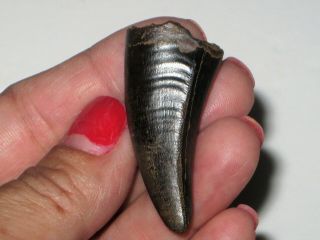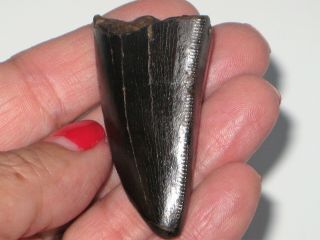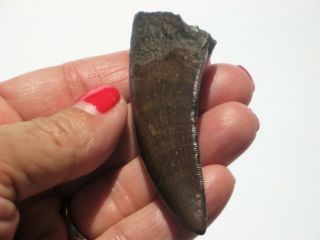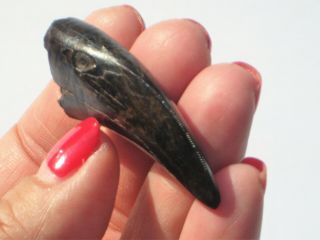Spinosaurus Triceratops Teeth Dinosaur Fossil Set Trilobite Ammonite Random Pick
Item History & Price
| Reference Number: Avaluer:15604266 |
The winner will receive FIVE REAL FOSSILS randomly selected from the lots pictured and each set is guaranteed to contain the following items:
Spinosaurus Tooth Fossil in Gem Box with ID Card
(Morrocco, Egypt - Cretaceous period - 112-97 Million Years Old)
Triceratops Tooth Fossil in Gem Box with ID Card(Hell Creek formation, South Dakota, USA - late C...retaceous period - 68 Million Years Old)
Ammonite Quenstedtoceras Fossil in Gem Box(United Kingdom - Jurassic period - 112-160 Million Years Old)
Ammonite Cleoniceras Fossil in Gem Box(Madagascar - Cretaceous period - 112-97 Million Years Old)
Trilobite Elrathia Kingii Fossil in Gem Box(Utah, USA - Cambrian Era - 520 Million Years Old)
! - WOW - !
What an AMAZING collection and a unique, rare opportunity!
Fossils are prized by Collectors, Paleontologists, Professors, Educators, Academics, Geologists and Rock Hounds!
Each amazing fossil is an incredible find, and a rare ancient gift from the earth to you!
Of course we offer FAST FREE SHIPPING for all USA customers!
ABOUT SPINOSAURUS:
Spinosaurus is a genus of theropod dinosaur which lived in what is now North Africa, from the lower Albian to lower Cenomanian stages of the Cretaceous period, about 112 to 97 million years ago. This genus was first known from Egyptian remains discovered in 1912 and described by German paleontologist Ernst Stromer in 1915. The best known species is S. aegyptiacus from Egypt, although a potential second species S. maroccanus has been recovered from Morocco.
Spinosaurus may be the largest of all known carnivorous dinosaurs, even larger than Tyrannosaurus and Giganotosaurus. Estimates published in 2005 and 2007 suggest that it was 12.6 to 18 metres (41 to 59 ft) in length and 7 to 20.9 tonnes (7.7 to 23.0 short tons) in weight. The skull of Spinosaurus was long and narrow like that of a modern crocodilian. Spinosaurus is known to have eaten fish; evidence suggests that it lived both on land and in water like a modern crocodilian. The distinctive spines of Spinosaurus, which were long extensions of the vertebrae, grew to at least 1.65 meters (5.4 ft) long and were likely to have had skin connecting them, forming a sail-like structure, although some authors have suggested that the spines were covered in fat and formed a hump. Multiple functions have been put forward for this structure, including thermoregulation and display.
ABOUT TRICERATOPS:
Triceratops is herbivorous dinosaur that first appeared during the late Cretaceous period, about 68 million years ago in what is now North America. It is one of the last known non-avian dinosaurs, and became extinct 66 million years ago. The term Triceratops literally means "three-horned face”. Bearing a large bony frill and three horns on its large four-legged body, and possessing similarities with the modern rhinoceros, Triceratops is one of the most recognizable of all dinosaurs. It shared the landscape with and was probably preyed upon by Tyrannosaurus, though it is less certain that the two did battle in the manner often depicted in traditional museum displays and popular images.
The exact placement of the Triceratops genus within the ceratopsid group has been debated by paleontologists. Two species, T. horridus and T. prorsus, are considered valid, although many other species have been named. The functions of the frills and three distinctive facial horns on its head have long inspired debate. Traditionally, these have been viewed as defensive weapons against predators.
ABOUT QUENSTEDTOCERAS AMMONITES:
Ammonoids are an extinct group of marine mollusc animals in the subclass Ammonoidea of the class Cephalopoda. These molluscs are more closely related to living coleoids (i.e., octopuses, squid, and cuttlefish) than they are to shelled nautiloids such as the living Nautilus species. The earliest ammonites appear during the Devonian, and the last species died out during the Cretaceous–Paleogene extinction event.
Ammonites are excellent index fossils, and it is often possible to link the rock layer in which a particular species or genus is found to specific geologic time periods. Their fossil shells usually take the form of planispirals, although there were some helically spiraled and nonspiraled forms (known as heteromorphs).
The name "ammonite", from which the scientific term is derived, was inspired by the spiral shape of their fossilized shells, which somewhat resemble tightly coiled rams' horns. Pliny the Elder (d. 79 AD near Pompeii) called fossils of these animals ammonis cornua ("horns of Ammon") because the Egyptian god Ammon (Amun) was typically depicted wearing ram's horns. Often the name of an ammonite genus ends in -ceras, which is Greek for "horn".
Quenstedtoceras is a genus of ammonoid cephalopods that lived during the latter part of the Jurassic period in what is now France, Germany, and the United Kingdom.
The shell of Quenstedtoceras is typically evolute and strongly ribbed, with all whorls visible. Widths vary according to the species from rather narrow to somewhat broad, as does ribbing. Ribs commonly start at the umbilical shoulder and extend laterally to about mid flank where they divide and curve forward toward the outer rim, or venter, and meet at a keel. Shells are of moderate size, commonly reaching diameters of about 6 cm (2.4 in).
Cephalopoda - Ammonitida - Cardioceratidae
Parent taxon: Cardioceratinae according to W. J. Arkell et al. 1957
Ecology: fast-moving nektonic carnivore
Environments: offshore, sand shoal
Age range: 161.2 to 112.6 Ma
Distribution:
• Cretaceous of the United Kingdom
• Jurassic of France, Germany, the United Kingdom
ABOUT CLEONICERAS AMMONITES:
Ammonoids are an extinct group of marine mollusc animals in the subclass Ammonoidea of the class Cephalopoda. These molluscs are more closely related to living coleoids (i.e., octopuses, squid, and cuttlefish) than they are to shelled nautiloids such as the living Nautilus species. The earliest ammonites appear during the Devonian, and the last species died out during the Cretaceous–Paleogene extinction event.
Ammonites are excellent index fossils, and it is often possible to link the rock layer in which a particular species or genus is found to specific geologic time periods. Their fossil shells usually take the form of planispirals, although there were some helically spiraled and nonspiraled forms (known as heteromorphs).
The name "ammonite", from which the scientific term is derived, was inspired by the spiral shape of their fossilized shells, which somewhat resemble tightly coiled rams' horns. Pliny the Elder (d. 79 AD near Pompeii) called fossils of these animals ammonis cornua ("horns of Ammon") because the Egyptian god Ammon (Amun) was typically depicted wearing ram's horns. Often the name of an ammonite genus ends in -ceras, which is Greek for "horn".
Cleoniceras is a rather involute, high-whorled hoplitid from the Lower to basal Middle Albian of Europe, Madagascar, and Transcaspian region. The shell has a generally small umbilicus, arched to acute venter, and typically at some growth stage, falcoid ribs that spring in pairs from umbilical tubercles, usually disappearing on the outer whorls.
Kingdom: Animalia
Phylum: Mollusca
Class: Cephalopoda
Subclass: Ammonoidea
Order: Ammonitida
Superfamily: Hoplitaceae
Family: Hoplitidae
Genus: Cleoniceras
ABOUT ELRATHIA KINGII TRILOBITES:
Trilobites are a fossil group of extinct marine arachnomorph arthropods that form the class Trilobita. Trilobites form one of the earliest known groups of arthropods. The first appearance of trilobites in the fossil record defines the base of the Atdabanian stage of the Early Cambrian period (521 million years ago), and they flourished throughout the lower Paleozoic era before beginning a drawn-out decline to extinction when, during the Devonian, all trilobite orders except the Proetids died out. Trilobites finally disappeared in the mass extinction at the end of the Permian about 250 million years ago. The trilobites were among the most successful of all early animals, roaming the oceans for over 270 million years.
By the time trilobites first appeared in the fossil record, they were already highly diversified and geographically dispersed. Because trilobites had wide diversity and an easily fossilized exoskeleton, an extensive fossil record was left behind, with some 17, 000 known species spanning Paleozoic time. The study of these fossils has facilitated important contributions to biostratigraphy, paleontology, evolutionary biology, and plate tectonics. Trilobites are often placed within the arthropod subphylum Schizoramia within the superclass Arachnomorpha (equivalent to the Arachnata), although several alternative taxonomies are found in the literature.
Trilobites had many lifestyles; some moved over the sea bed as predators, scavengers, or filter feeders, and some swam, feeding on plankton. Most lifestyles expected of modern marine arthropods are seen in trilobites, with the possible exception of parasitism (scientific debate continues). Some trilobites (particularly the family Olenidae) are even thought to have evolved a symbiotic relationship with sulfur-eating bacteria from which they derived food.
Elrathia is a genus of ptychopariid trilobite species that lived during the Middle Cambrian of Utah, and possibly British Columbia. Elrathia kingii is found in the USA within the Wheeler Formation in the U.S. state of Utah. Elrathia kingii has been considered the most recognizable trilobite.
Elrathia kingii is a medium-sized trilobite with a smooth sub-ovate carapace that is tapered towards the rear. Thorax is usually 13 segments. Pygidium has four axial rings and a long terminal piece. Posterior margin of the pygidium has a long broad medial notch.
Kingdom: Animalia
Phylum: Arthropoda
Class: Trilobita
Order: Ptychopariida
Family: Alokistocaridae
Genus: Elrathia



